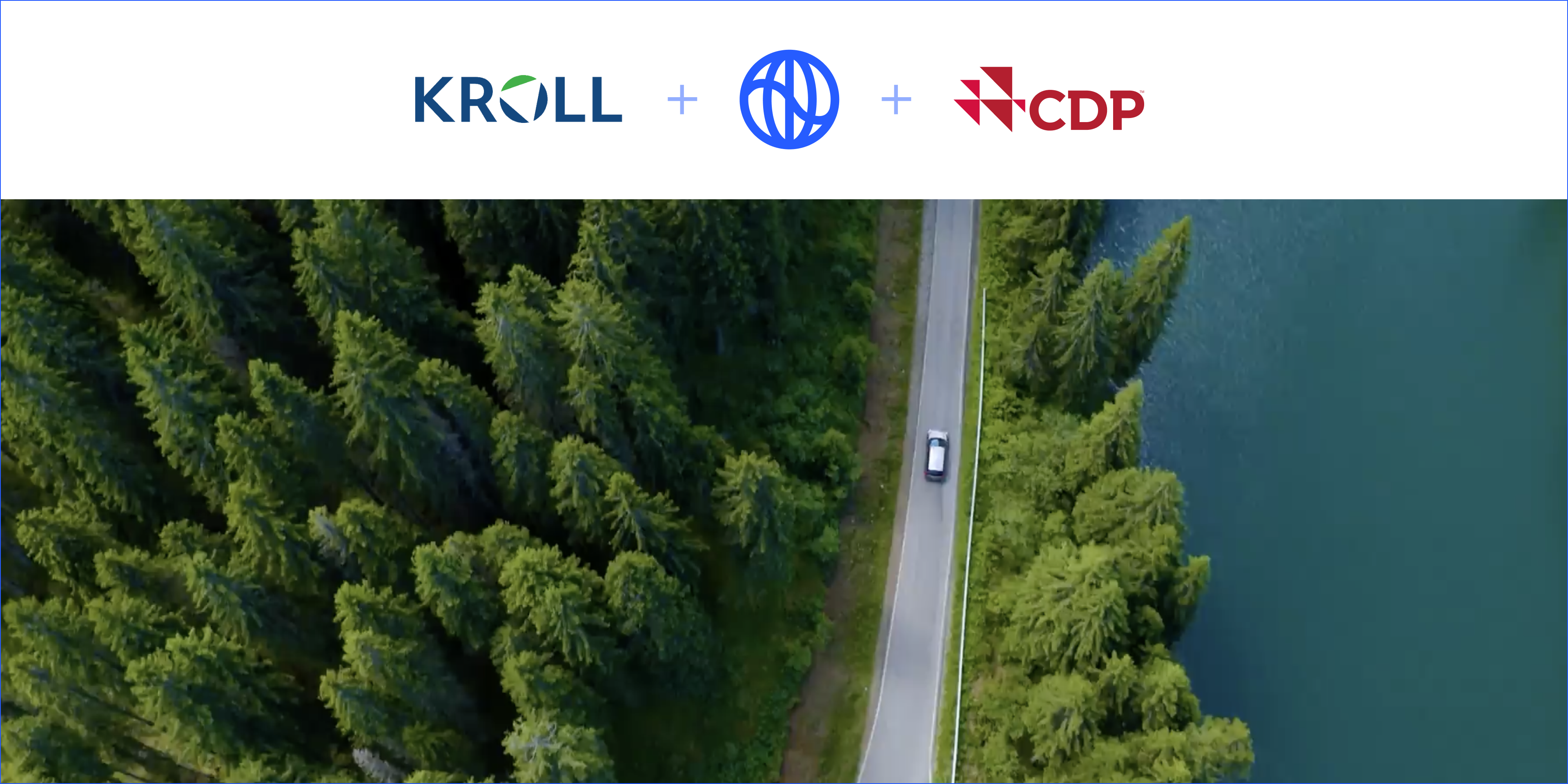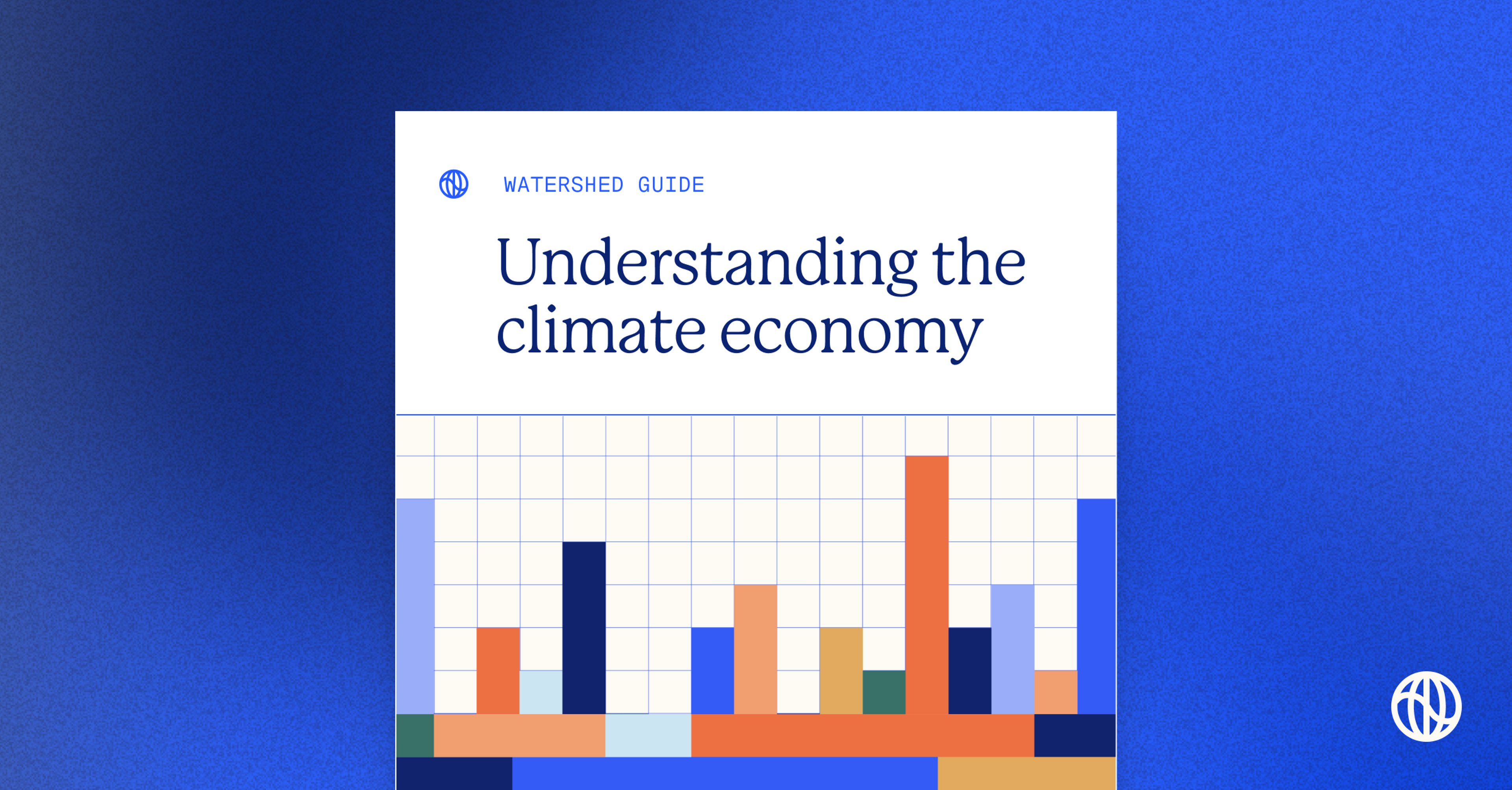Companies choose to report to CDP for a variety of reasons. Many companies receive requests to disclose from their investors or customers, who seek more transparent sustainability information to make informed investment or purchasing decisions. Some companies use CDP to prepare for upcoming regulations that will require companies to disclose their sustainability practices. Still others prioritize sustainability voluntarily, as a means of engaging employees or gaining market advantage.
Climate disclosures
CDP reporting: what it is & what to know
CDP—formerly known as the Climate Disclosure Project—is the leading voluntary climate disclosure framework used by companies around the world. Although not a regulatory requirement, CDP is an essential tool for companies seeking to reap the business benefits of participating in the new climate economy. Learn what CDP is, how it works, and what you can do to prepare a successful CDP disclosure.
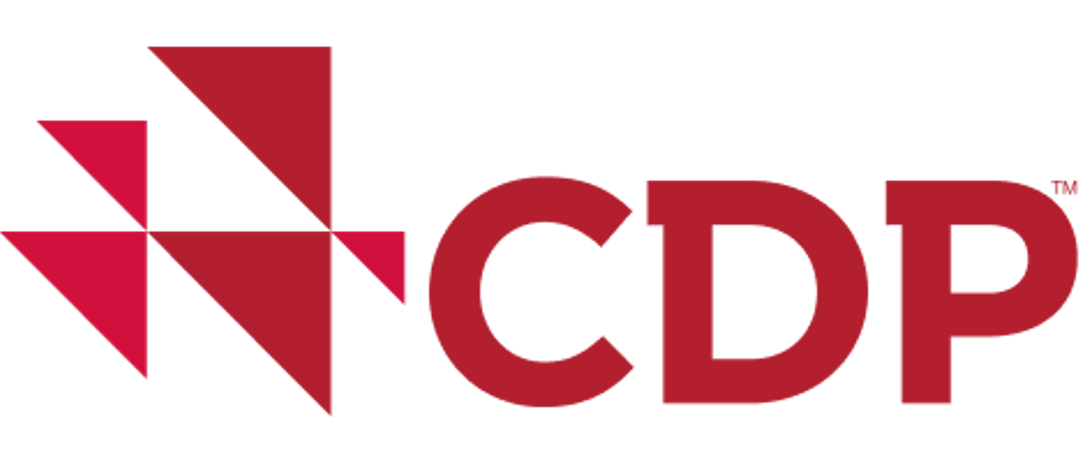
What is CDP?
CDP (formerly known as the Carbon Disclosure Project) is a nonprofit organization that operates a global emissions disclosure program for companies, government agencies, and investors. CDP reviews the submissions of thousands of participating organizations each year, then assigns each organization a score based on the quality of their disclosure and the robustness of their climate program.
Why is CDP important?
Although not a regulatory body, CDP provides important oversight and transparency for investors, businesses, and consumers looking to make funding, partnership, or purchase decisions that take sustainability into account. CDP not only advances transparency and accountability for global sustainability, but also helps companies prepare their data and identify gaps in advance of mandatory climate disclosure requirements.
CDP submission deadlines
CDP submission deadlines shift from year to year; refer to the CDP website for the latest information. In general, though, here’s what the CDP reporting cycle looks like:
January | CDP releases questionnaires and guidance materials for filers | |||
April | CDP begins accepting submissions via its online system | |||
July | Deadline for scored CDP submissions | |||
September | Deadline for non-scored CDP submissions Organizations that miss the July deadline may still submit to CDP. Their submissions will not be scored, but will be included in CDP’s database of self-reported datasets. | |||
October | Public responses are made available on CDP’s website | |||
Dates vary | CDP releases company scores (usually at the end of the year, or early in the following year) | |||
What are examples of CDP reporting requirements?
CDP accepts disclosures in three categories: climate change, forests, and water security. Below, we’ve listed a sampling of some of the types of questions that CDP’s climate change questionnaire asks. Note: All questionnaires change slightly year to year, and certain sectors, such as heavy industrials and financial institutions, have sector-specific questionnaires. For this year’s questions, refer to the CDP website.
Examples of CDP disclosure questions for climate change category
Governance | What oversight and executive accountability does the organization have in place for sustainability? | ||
Risks & opportunities |
| ||
Business strategy |
| ||
Targets & performance | What climate targets are in place, and what progress has been made toward those targets? | ||
Emissions methodology | What methodology is being used to calculate emissions? | ||
Emissions data | CDP calls for disclosure of Scope 1, 2, and 3 greenhouse gas emissions | ||
Emissions breakdown |
| ||
Energy |
| ||
Verification | Has the emissions data you’re disclosing been reviewed and/or verified by an independent third party? | ||
Value chain engagement | Do you engage with your supply chain on climate-related issues? | ||
Biodiversity | Do you assess the impacts and dependencies of its value chain on biodiversity? | ||
How to prepare CDP reporting with Watershed
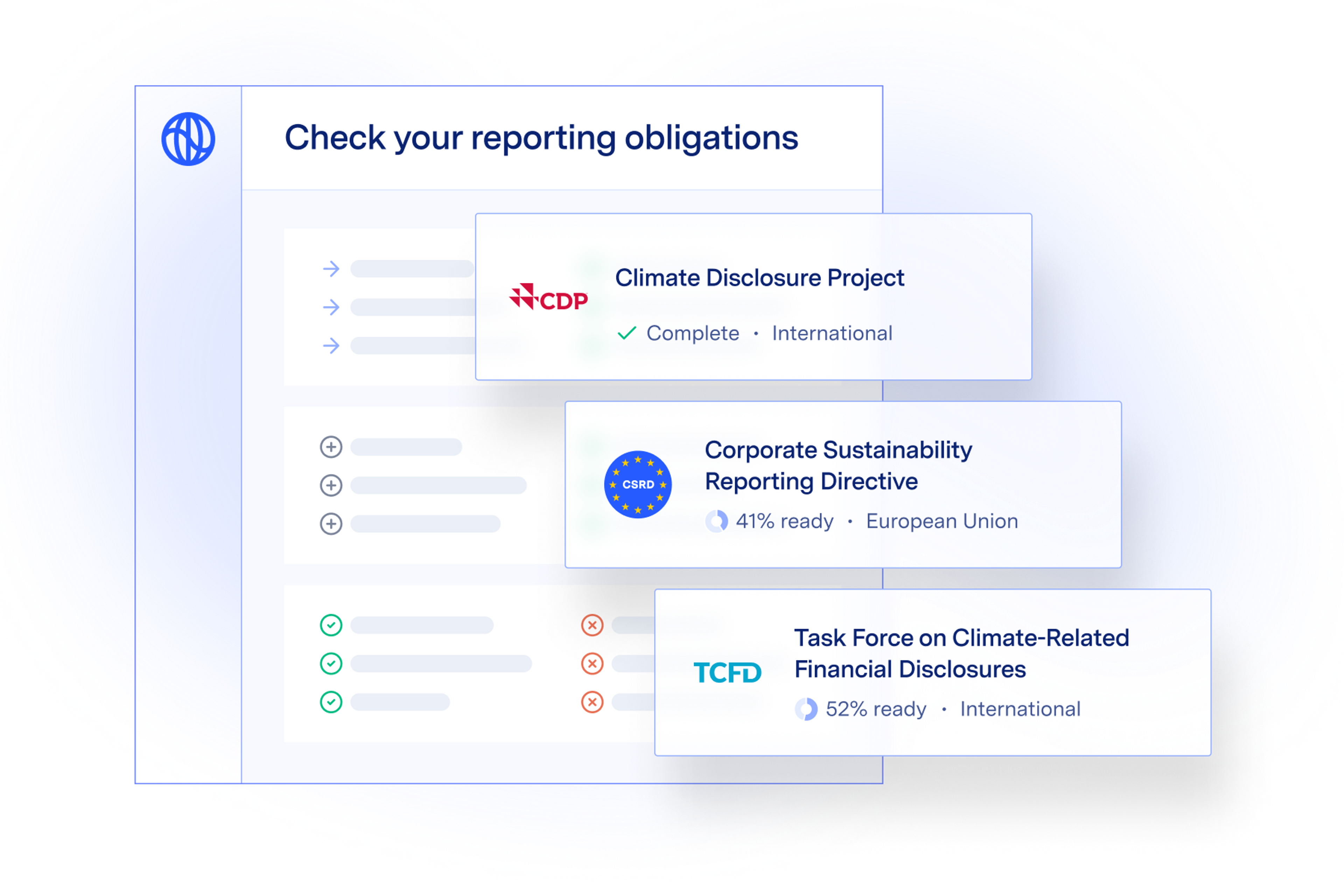
Understand the requirements
Watershed helps you navigate different sustainability reporting frameworks, track the status of your reports, and build on previous disclosures. Not a customer yet? Take our quick assessment to see where you stand.
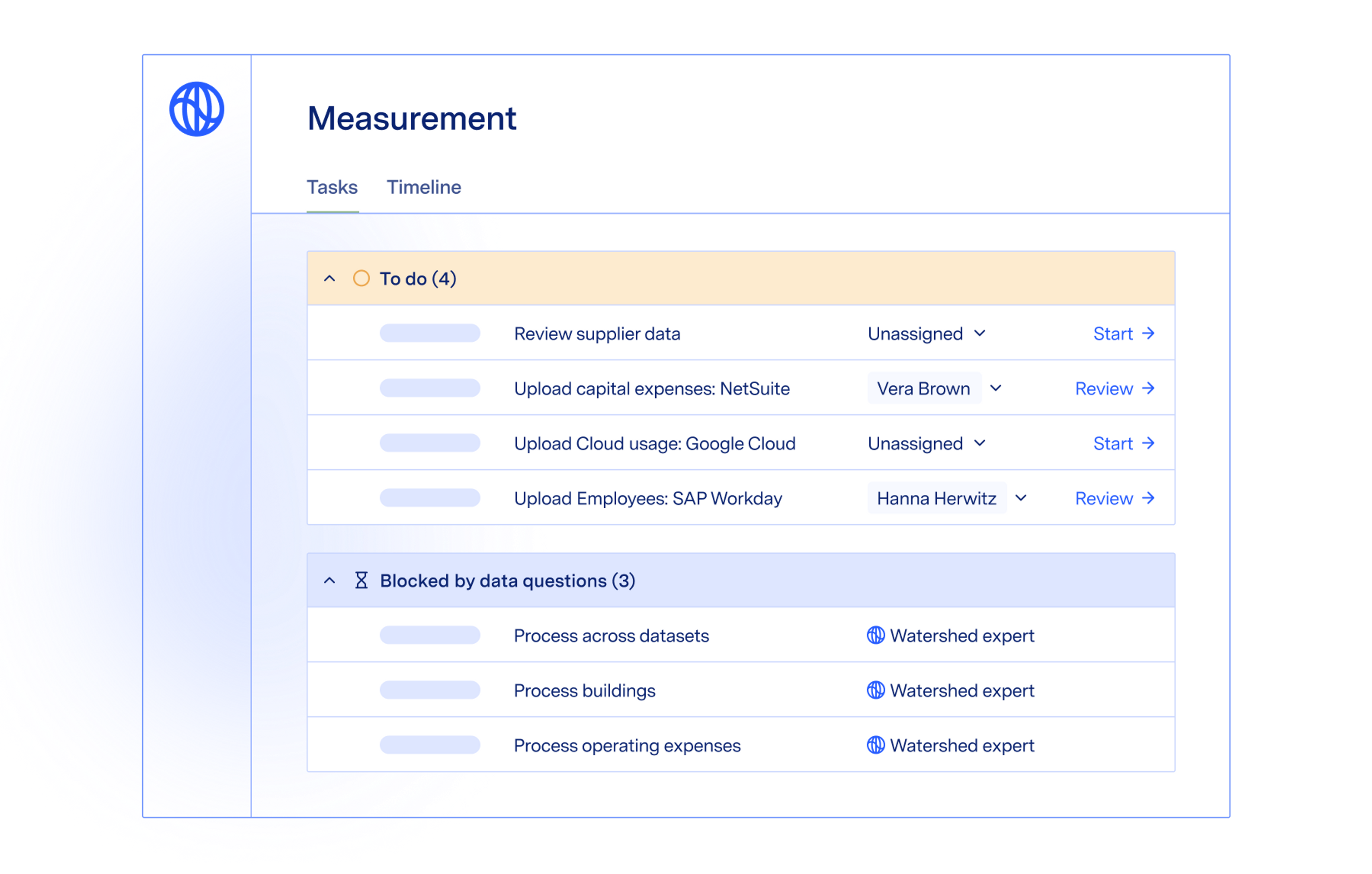
Add your data
Watershed offers 60+ pre-built integrations with existing business systems to ingest data instantly, and you can also upload data in a variety of flexible formats. Once your data is in the Watershed platform, we’ll automatically screen for data gaps and anomalies.
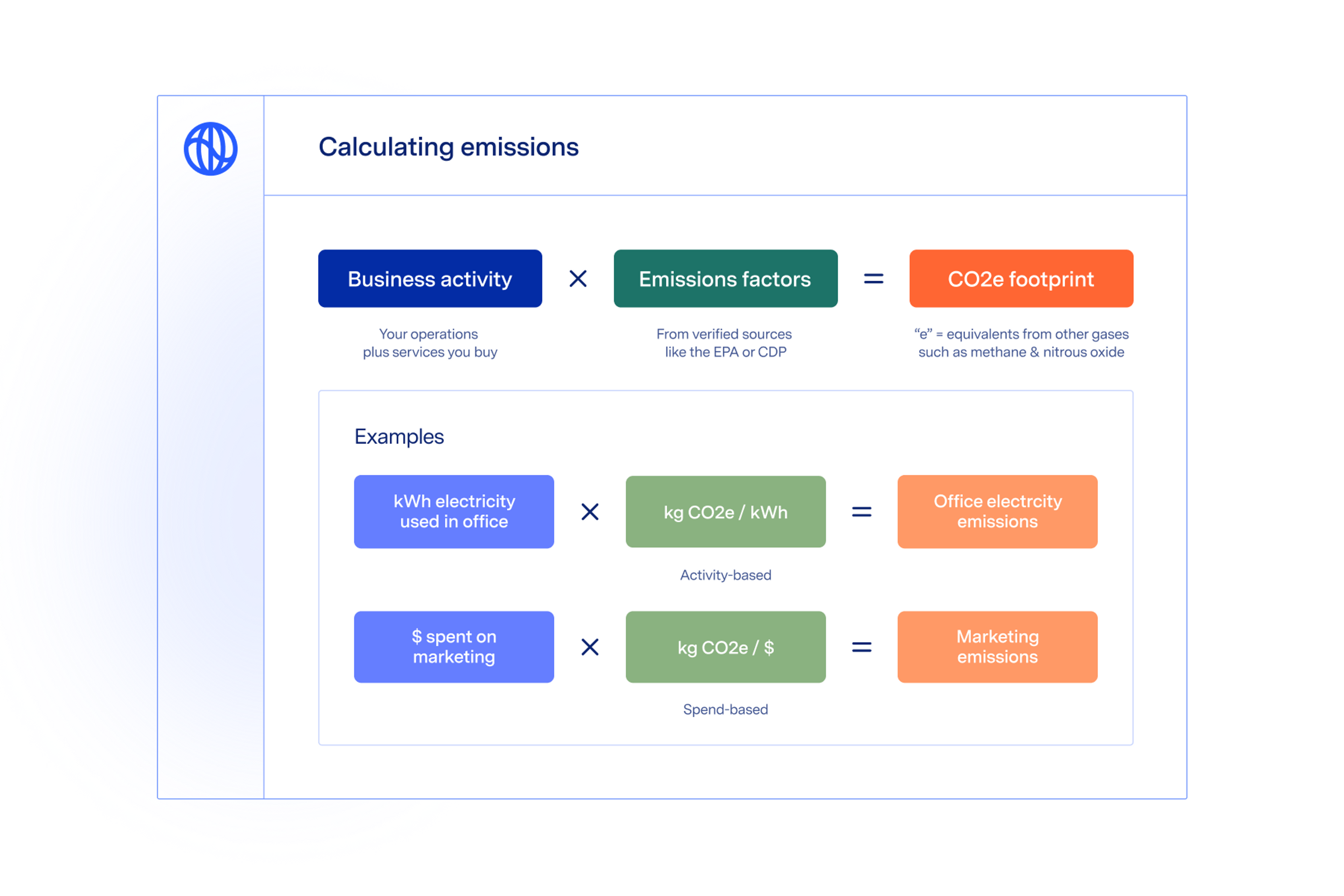
Dive into the details
Want to know how your footprint was calculated? With Watershed, you can see calculations and audit trails for every aspect of your carbon footprint.
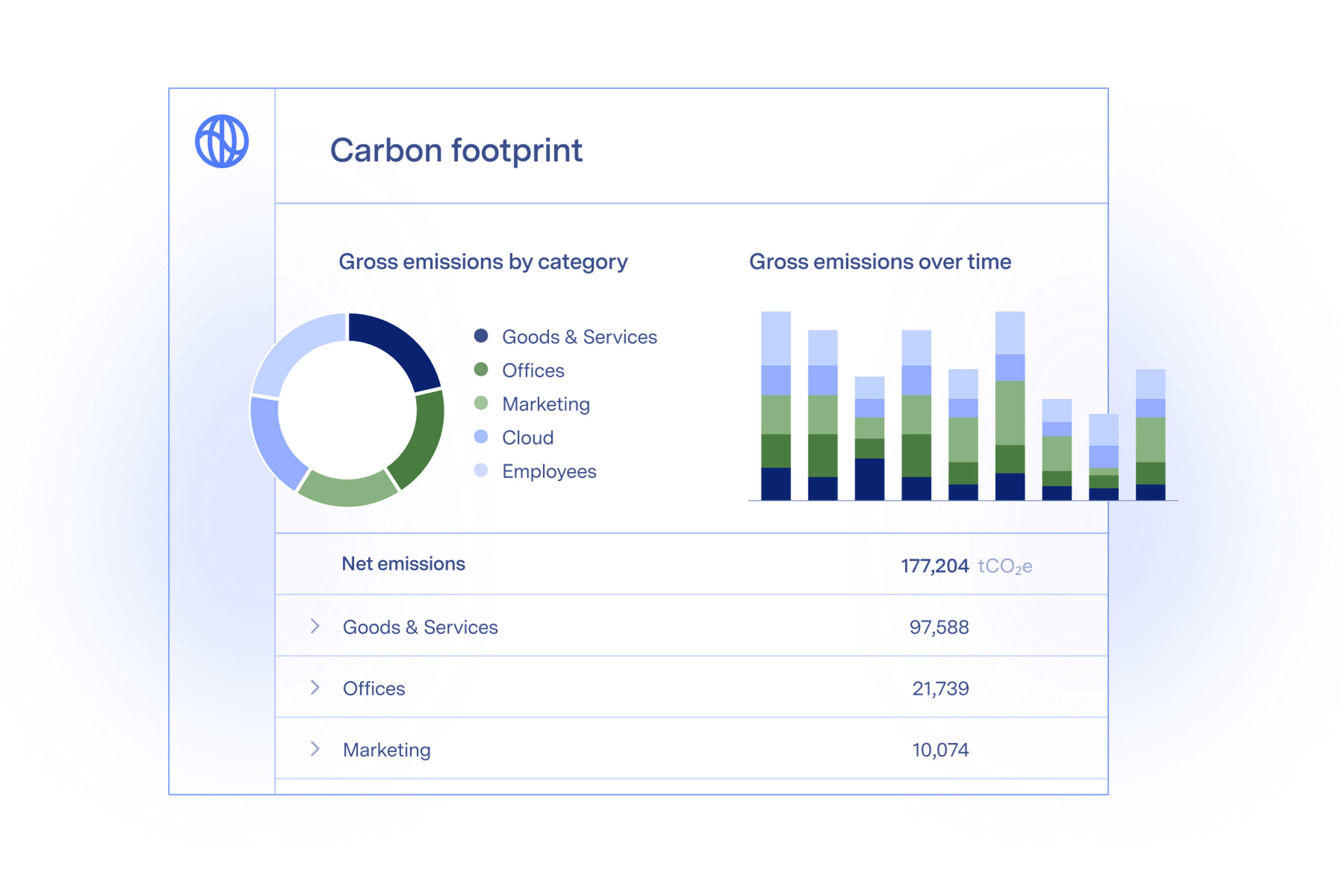
Analyze your footprint
Filter, sort, and visualize your data to identify trends, uncover opportunities and benchmark against peers. You can also explore Scope 3 emissions within your supply chain to develop an action plan for reducing emissions.
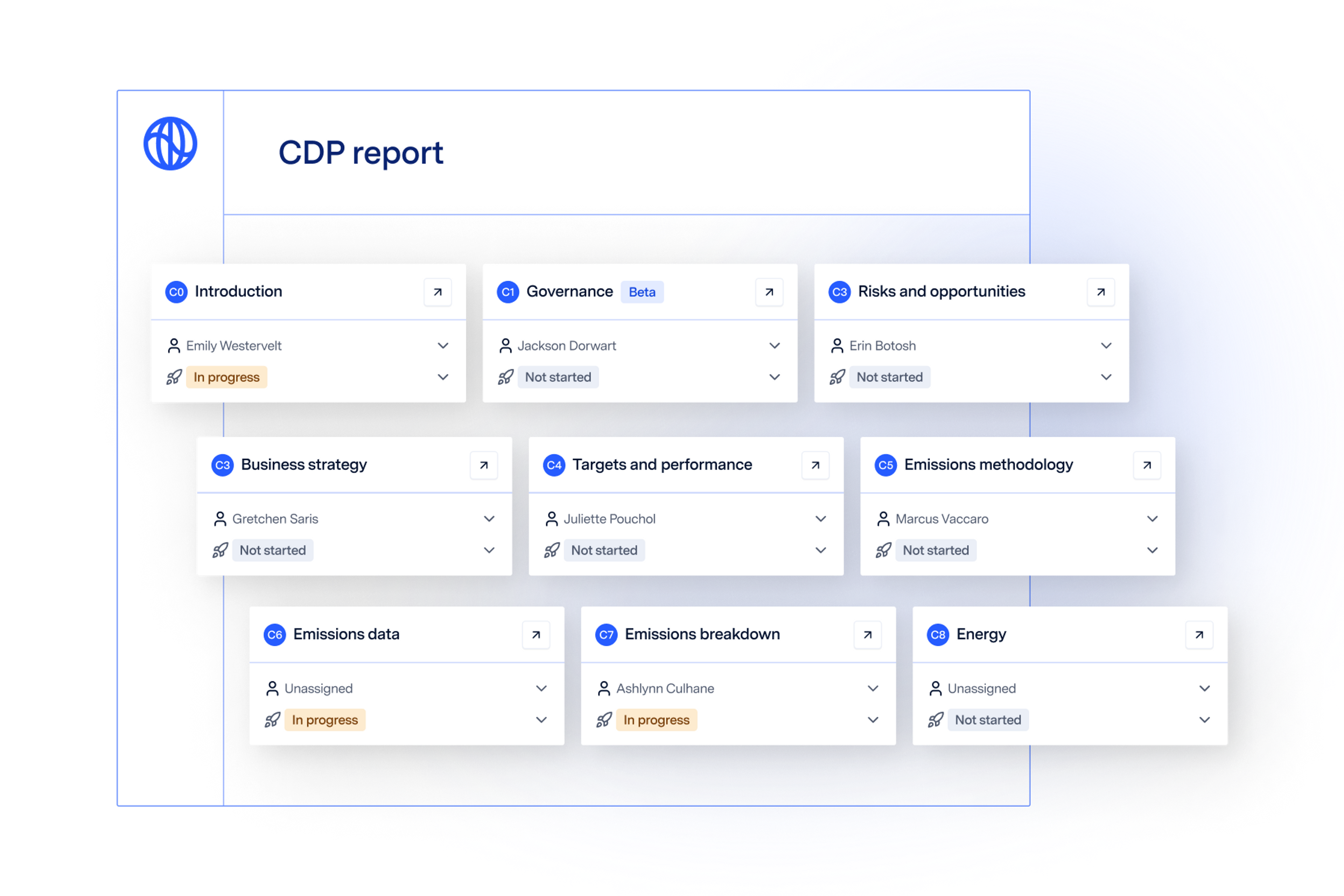
Prepare your data for CDP disclosure
Once your data is ready, you can choose which report you want to complete and which year(s) of data to include. Watershed will automatically format your data for that report, significantly reducing the time you spend copy-pasting and formatting data.
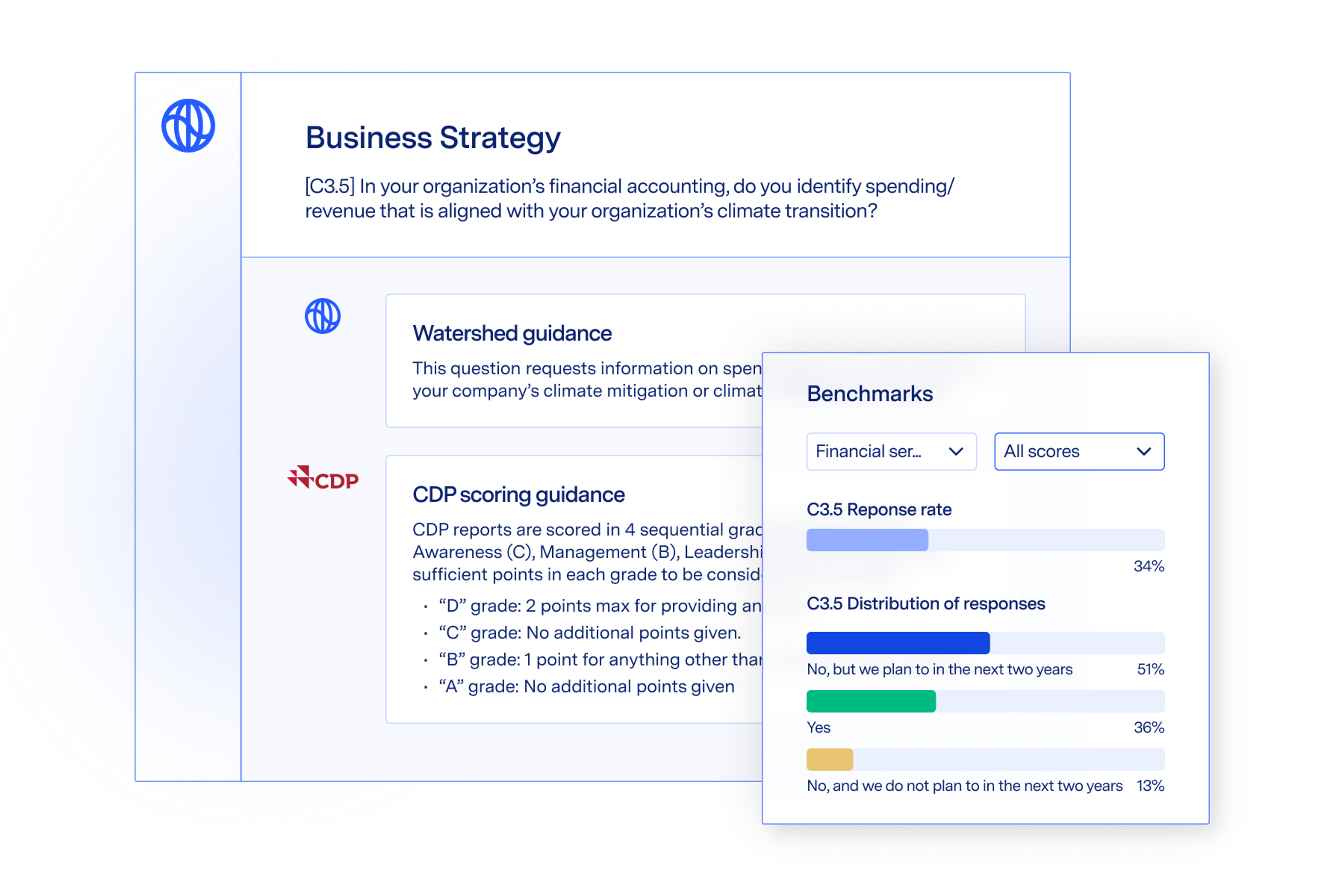
Complete your CDP submission
As you start answering questions, you'll get built-in guidance from reporting experts on how to best address each section. Put together the highest-quality responses by referencing peer responses, question by question, all integrated into the reporting workflow.
Not sure what data you need to disclose?
Take our 8-question assessment to understand your sustainability reporting obligations.
